
Summer’s coming! You know it’s summer when you hear the whack of June Bugs smacking into your sliding glass door. Let’s discuss how to get rid of June Bugs.
Are you ready to enjoy the season? If you want to relax this summer, let Environmental Pest Management handle pest control.
We handle all kinds of indoor and outdoor pests in the Twin Cities and greater Minnesota. Contact us today for a free quote.
How to Identify June Bugs
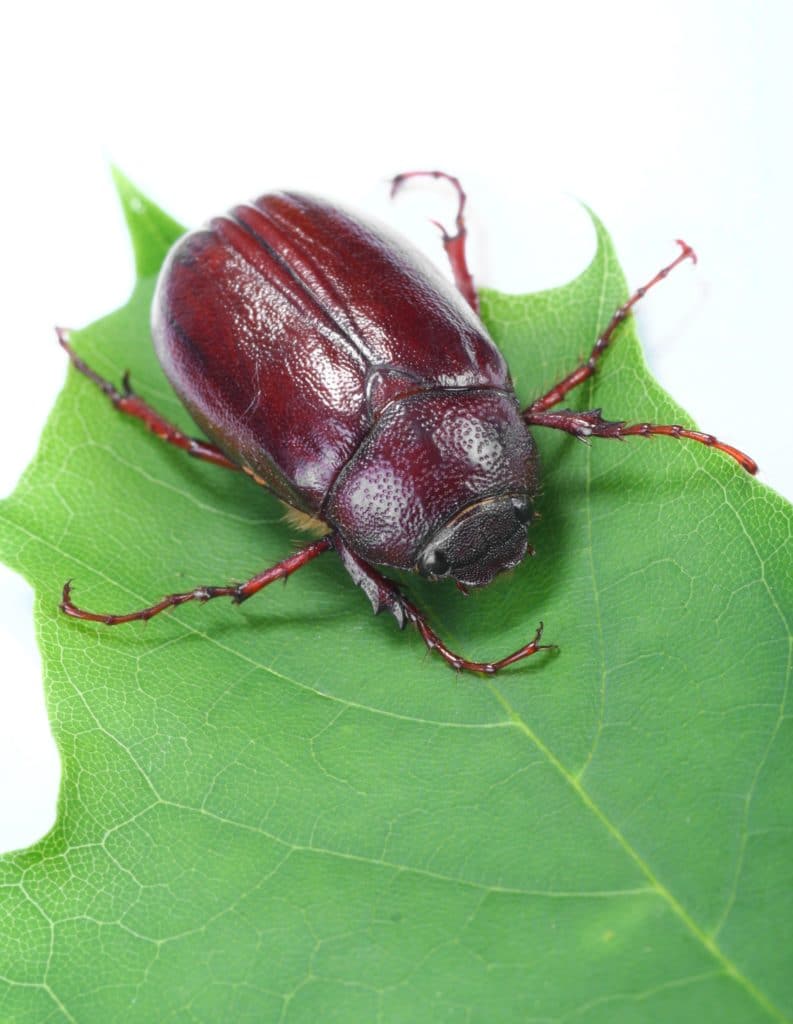
There are hundreds of June bugs species, but in Minnesota, there are roughly 20 bugs with this name. June Bugs in our area are about an inch long and have an oval-shaped body.
These bulbous bugs have six hairy-looking legs and a pair of black antennae. They are dark brown, although some appear almost black or maroon.
The June bug’s back and body is a hard, smooth shell with a uniform color and no markings. The underside is hairy.
When they walk, they move in a bumbling way, almost as though their legs are too short for their bodies. When they fly, they always look like they’re about to crash.
They certainly are goofy, graceless bugs.
June Bugs are unique insects with two sets of wings. That hard shell covering the backside is a set of wings. There’s a second pair underneath the first.
The top set of wings serves to protect the bug but sticks out straight to be out of the way in flight. The top wings sticking out make this bug aerodynamically awkward.
What Is A June Bug’s Life Cycle?
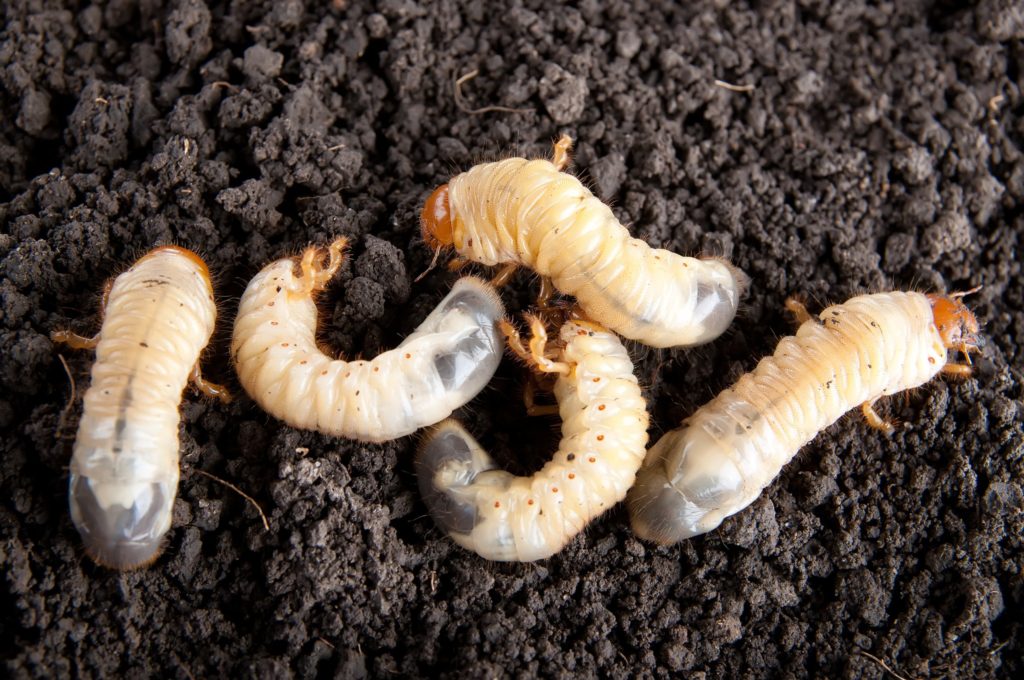
Adult June Bugs show up in or around (you guessed it) the beginning of summer. But where do they originate?
The bug begins life as an egg. The little white egg takes about three weeks to hatch.
The June Bug larva makes its way into your soil. It has a huge appetite, and it will molt twice before moving to the next stage of life.
The bug will continue in the larval stage, eating roots and growing for one to three years.
When the larva has grown and matured enough, it enters the pupal stage.
The pupa starts dark brown, gradually taking on an iridescent sheen. The pupa remains underground and doesn’t move at all during this stage.
The pupal stage lasts about three weeks. When this stage ends, the adult bug finds its way out of the ground and flies off to find a meal.
What Draws June Bugs To Your Home Or Yard?
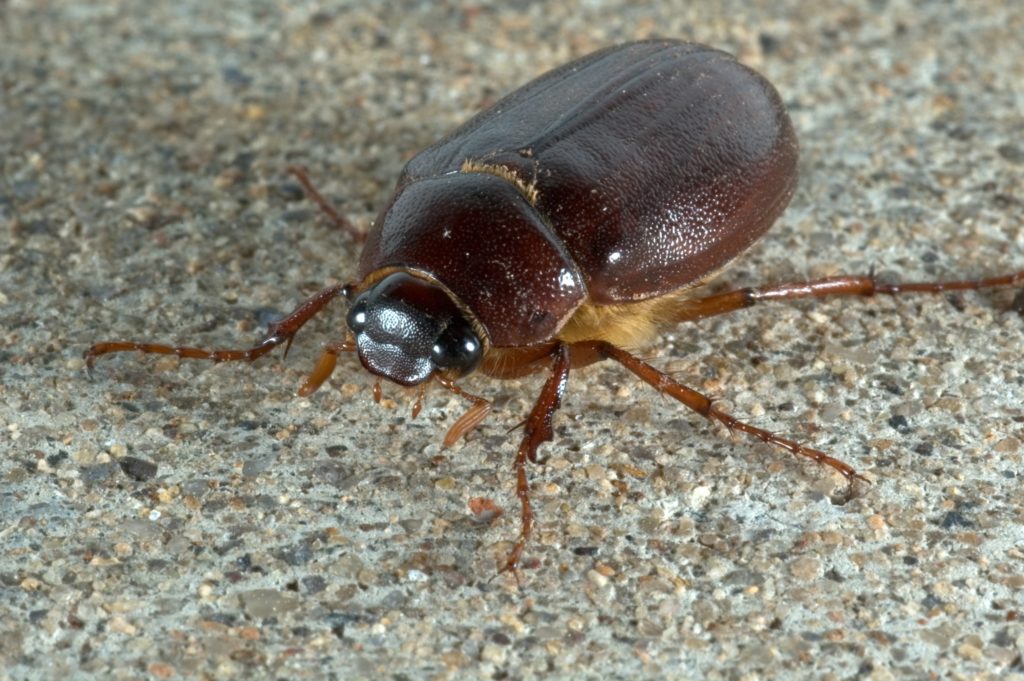
June Bugs are attracted to moist soil and organic material. If you leave grass clippings left in your yard, June Bugs will be happy to dine there.
Damp soil is an ideal place for June beetles to lay their eggs. When the eggs hatch, the June Bug grubs will burrow into your lawn.
June Bugs are drawn to any light source. If you have exterior lights on in early summer, you are likely hosting a nightly June Bug party. It may be the reason you’re researching how to get rid of June Bugs!
What Harm Do June Bugs Cause?
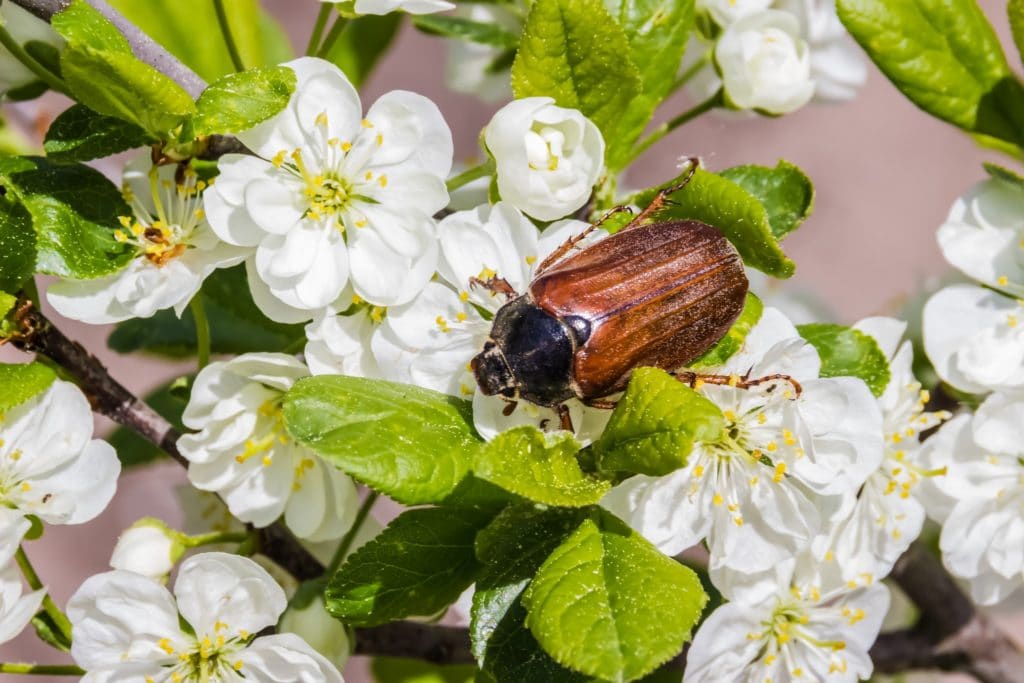
This flying, bumbling beetle is not a danger to people, and they do not want to bite or eat you. But June Bugs are interested in your plants.
June Bugs eat a wide variety of plant leaves, making Swiss cheese out of your lawn and garden. But that’s just the start.
The bugs lay eggs in your soil, turning your yard into a June Bug nursery. When the eggs hatch, the grubs feast on the roots of your plants.
A grub infestation can cause patches of dead grass to show up on your lawn. Brown patches in your yard are a sign of grubs munching on your roots.
Bugs in your lawn can also attract other animals notorious for being pests. Skunks and raccoons will dig small holes digging up grubs for dinner.
How To Get Rid Of June Bugs
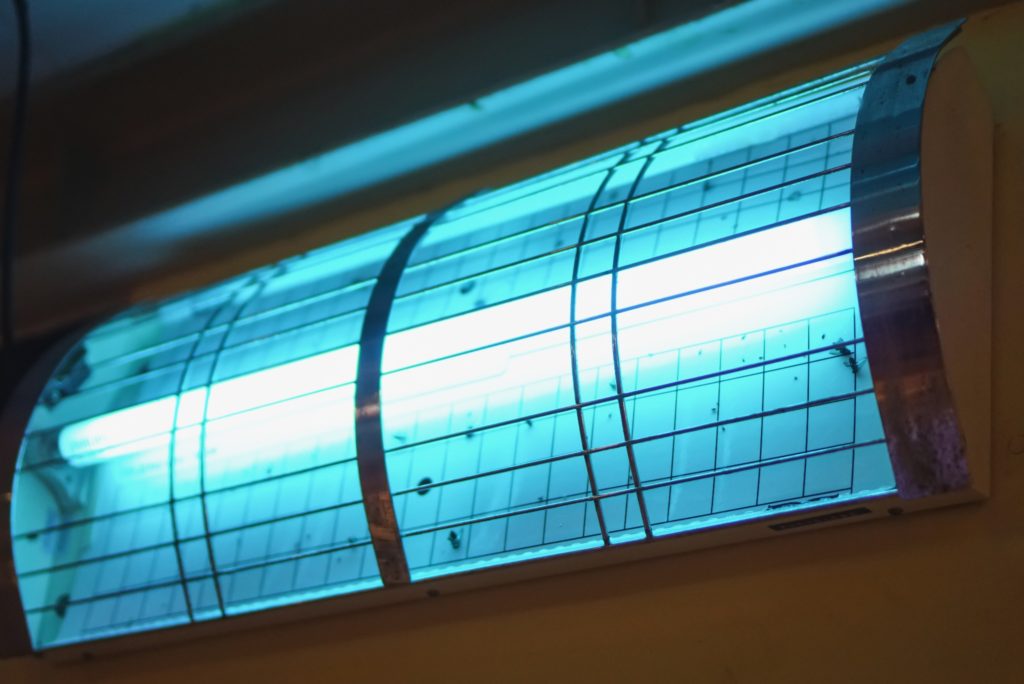
The first step to getting rid of June bugs is to focus on the adults.
If you aren’t squeamish, grab a pair of gardening gloves and pick the bugs off your plants by hand. Place them into a jug of soapy water to drown them.
If you prefer a hands-off approach, try this integrated pest management approach. This DIY insect killer is safe for humans and the environment:
- Mince four cloves of garlic. Soak them overnight in a tablespoon of mineral oil.
- Drain the oil, then add the garlic to a pint of water.
- Add a teaspoon of dish soap to the mix.
- Put two tablespoons of your mix in a pint-sized spray bottle. Fill the remainder with water.
To get rid of June Bugs, spray the ones you see, as well as the plants they’ve been munching. The method also works well on Japanese beetles.
You can also reduce your June Bug count by installing a bug zapper. These bugs are notorious for heedlessly heading into lights. They fly straight into a crispy end with this contraption.
Once you’ve gotten control of the adults, you’ll need to address the grubs.
June Bugs like to lay eggs in short grass, so don’t mow your lawn too low. You can set the mower to at least three inches to keep it at an ideal height.
Deal with grubs naturally by introducing nematodes to the soil. You can purchase these microscopic worms online or at a garden center. Apply them with a spray bottle.
A similar method is to apply a bacteria called Bacillus Thuringiensis, or BT. Apply in a spray or powder form to safely eliminate grubs.
If you need a more robust solution, try an insecticide that contains neem oil. This compound is toxic for many larvae but will not harm most beneficial bugs.
Don’t Want To Deal With Bugs This Summer? Let Us Help
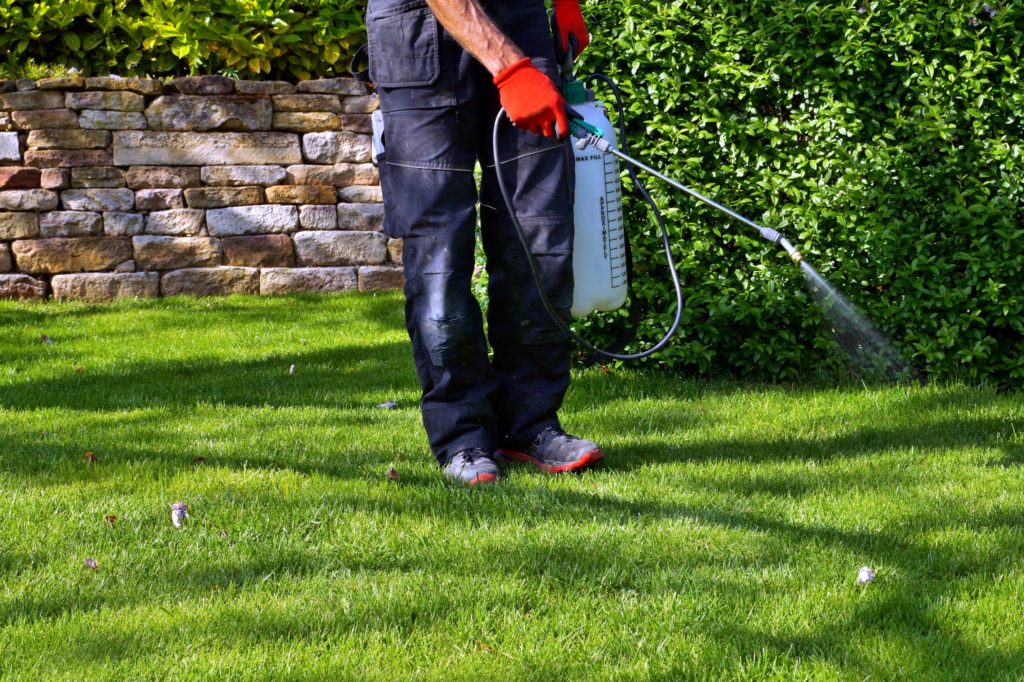
If you’ve tried managing your outdoor pests, but they keep coming back, give us a call at Environmental Pest Management. We are experts at keeping your Minnesota yard free of nuisance bugs.
Reach out today for your free quote to be on your way to having a pest-free environment!
